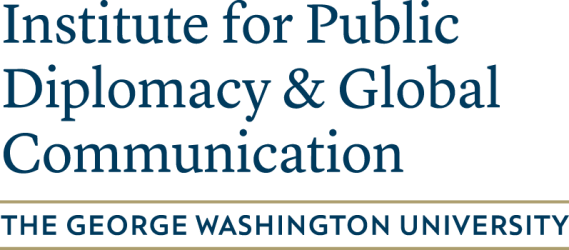[www.aspeninstitute.org/c&s/pdfs/netpolitik.pdf Available online] or by contacting the Aspen Institute Communications and Society Program at (202) 736-5818 or at sunny@aspeninstitute.org.
Andrew Bushell and Brent Cunningham. “Being There: Suddenly the Pentagon Grants Access to the Action, But the Devil’s in the Details,” Columbia Journalism Review, March/April 2003. Analysis of the pros and cons of embedded media with troops in the Middle East.
DiploFoundation. International Conference on Intercultural Communication and Diplomacy (Malta, 20-23 February 2003). Report on a conference attended by 70 participants from 36 countries. Twenty four speakers presented on aspects of intercultural communication in diplomacy. Topics include cultural categories and values diplomats are likely to encounter in their work, stories from diplomatic practice, and case studies examining diplomacy in dealing with contacts between cultures.
Herbert J. Gans. Democracy and the News, Oxford University Press, 2003. Gans, Robert S. Lynd Professor of Sociology at Columbia University, updates his 1979 classic Deciding What’s News. Reflections on the media and participatory democracy in the context of concerns about increasingly powerful public agencies and interest groups.
Ted Gup. “Useful Secrets: In a Run-up to a War, How Do We Report Intelligently on Intelligence?” Columbia Journalism Review, March/April, 2003.
Mark Hunter. “Is Paris Seething? Anti-Americanism is on the Rise With the Help of the French Press,” Columbia Journalism Review, January/February, 2003. Hunter’s “Letter from France” analyzes media trends, changing attitudes, Internet impact, stepped up U.S. media competition in Europe, and the declining gatekeeper role of The International Herald Tribune.
Kathleen Hall Jamieson and Paul Waldman. The Press Effect: Politicians, Journalists, and the Stories that Shape the Political World. Oxford University Press, 2003. Jamieson, Dean of the Annenberg School of Communication at University of Pennsylvania and Waldman, Annenberg Postdoctoral Fellow, assess news reporting from the 2000 campaign through the period after September 11. Chapter titles include: Press as Storyteller, Press as Amateur Psychologist, Press as Soothsayer, Press as Shaper of Events, and Press as Patriot.
Edmund S. Morgan. Benjamin Franklin, New Haven, Yale University Press, 2002. Chapter 5, “The Importance of Opnion,” in Morgan’s masterful new biography provides insights into Franklin’s thinking on public opinion and his uses of political communication while serving as a colonial agent in London.
Terence Smith. “War News,” Online NewsHour with Jim Lehrer, April 1, 2003. Strengths and weaknesses of the military’s “embedding” program and its influence on news of the war in Iraq.
Susan Sontag. Regarding the Pain of Others, New York, Farrar, Straus & Giroux, 2003. Sontag’s short book (131 pages) looks at photojournalism and the documentary imagery of war from Mathew Brady and the Charge of the Light Brigade in the 19th century to Vietnam, Cambodia, and the Balkans.
State Department, Bureau of Educational and Cultural Affairs. Impact of International Professional Exchanges on a U.S. Community: Philadelphia, PA. ECA’s Office of Policy Evaluation assessment of the impact of international professional exchanges on U.S. volunteers who host or meet with foreign visitors. The evaluation focuses on International Visitor, Community Connections, and Sister Cities programs. (Courtesy of Ted Knicker, ECA)
– Eight page executive summary
University of Windsor (Ontario Canada), Leddy Library. Website with links to a wide variety of news service coverage of the war in Iraq. Includes mainstream U.S., Canadian and overseas news media, governmental news releases, news summary and analysis sources, and various “alternative” news services. (Courtesy of Margarita Studemeister, US Institute of Peace)
